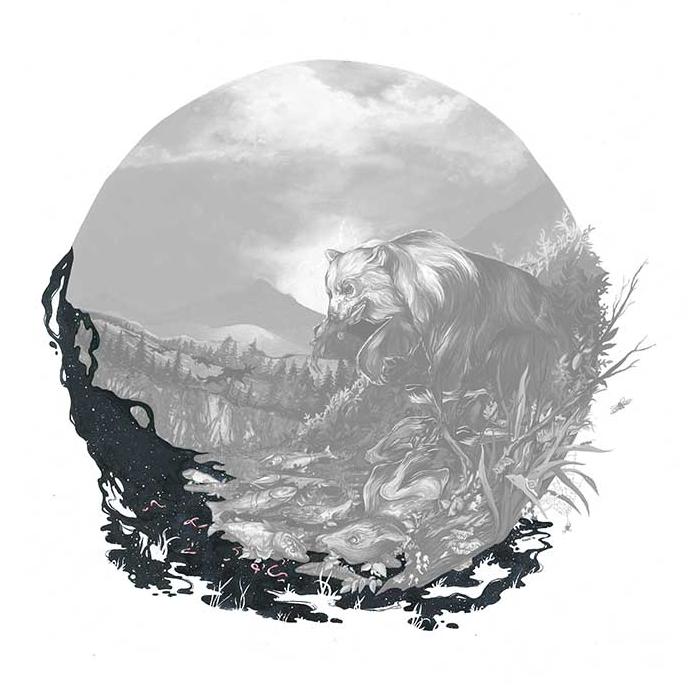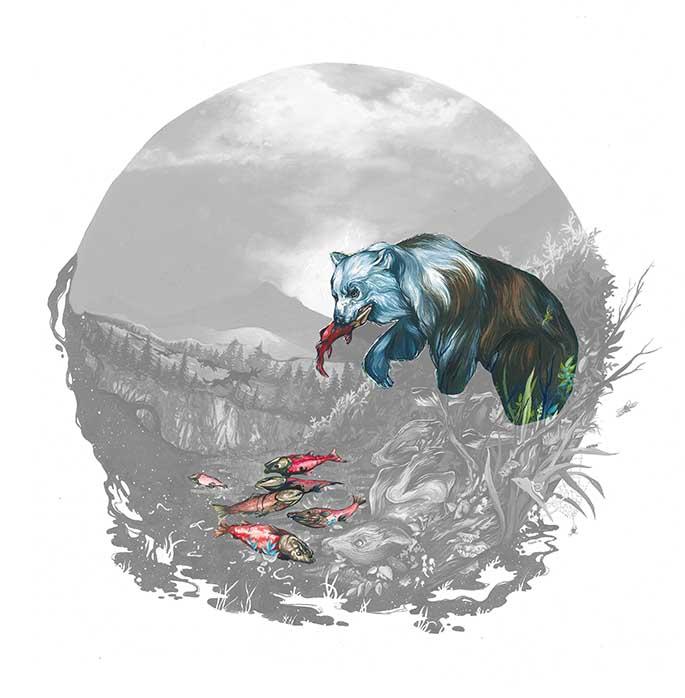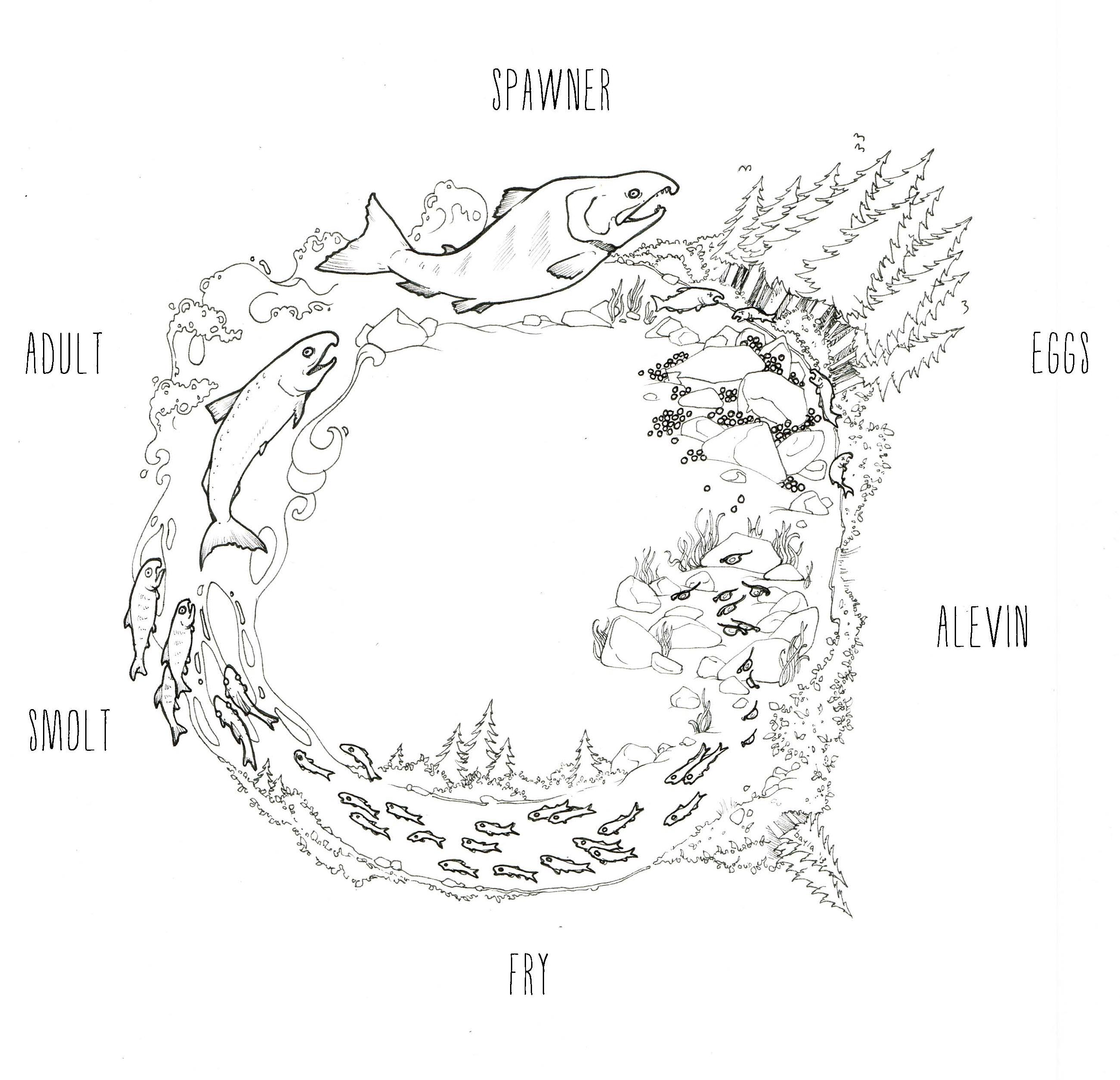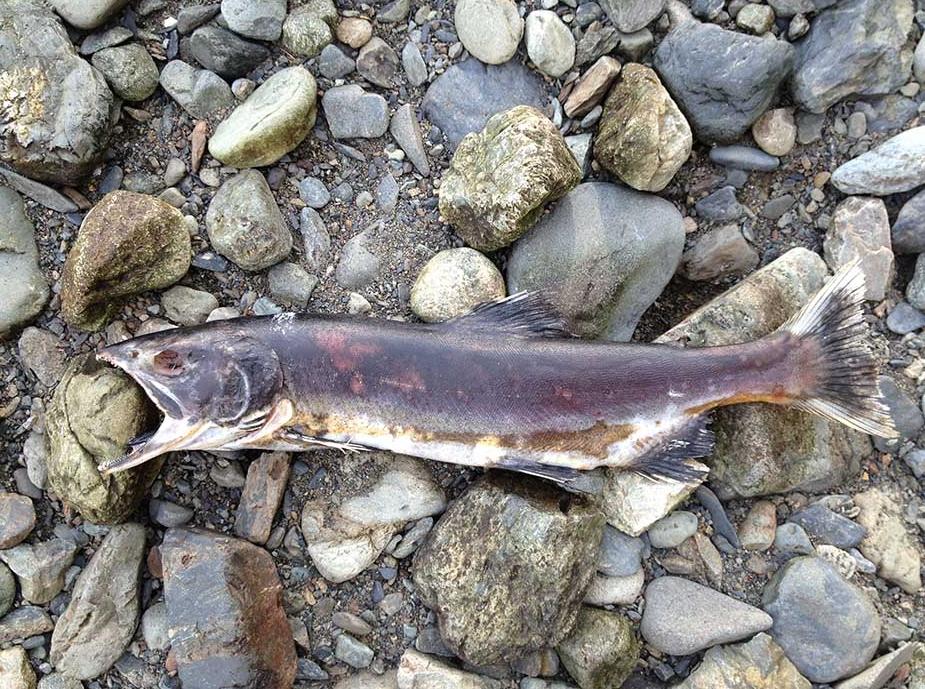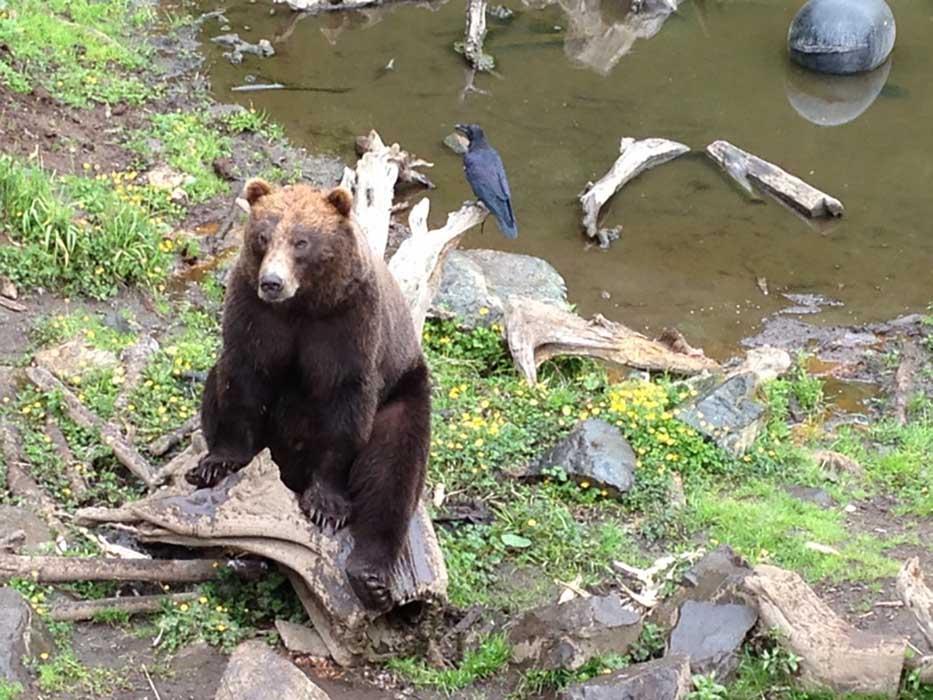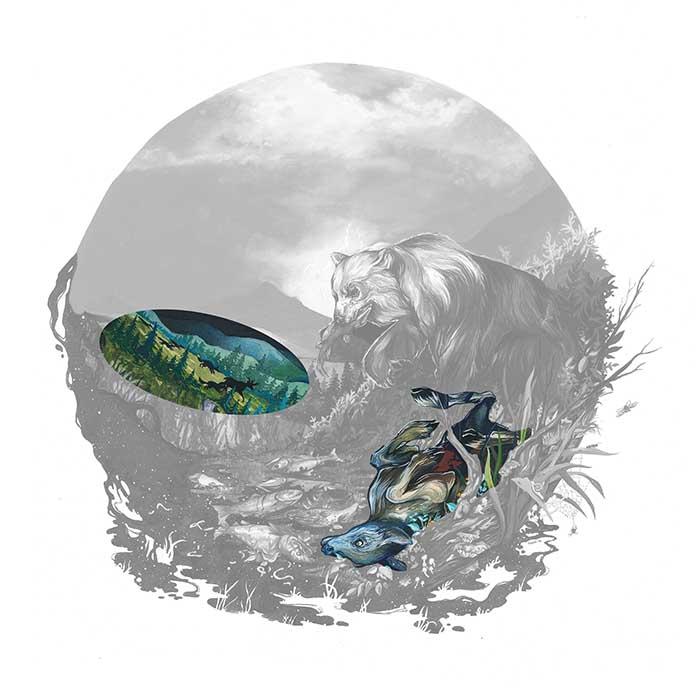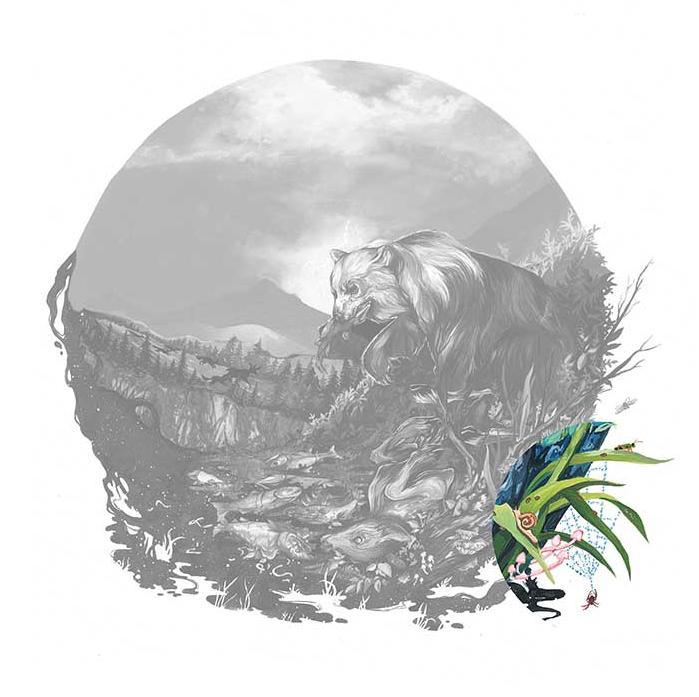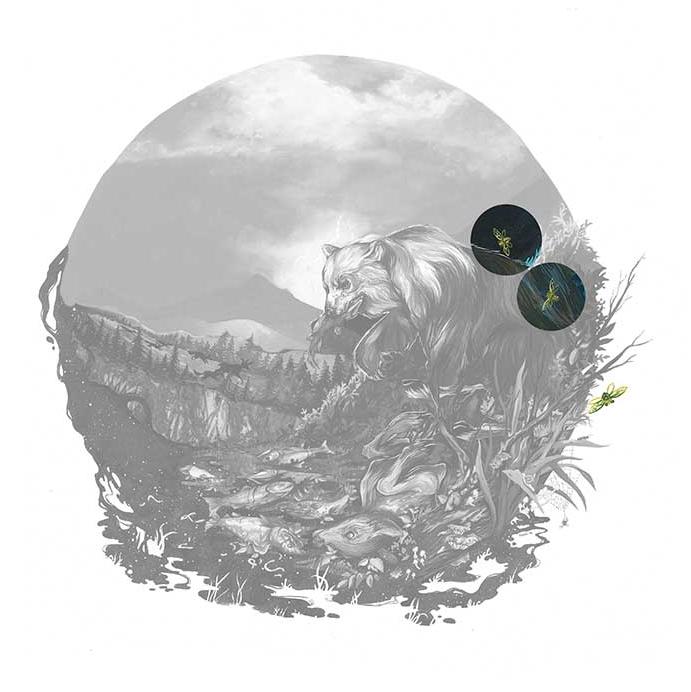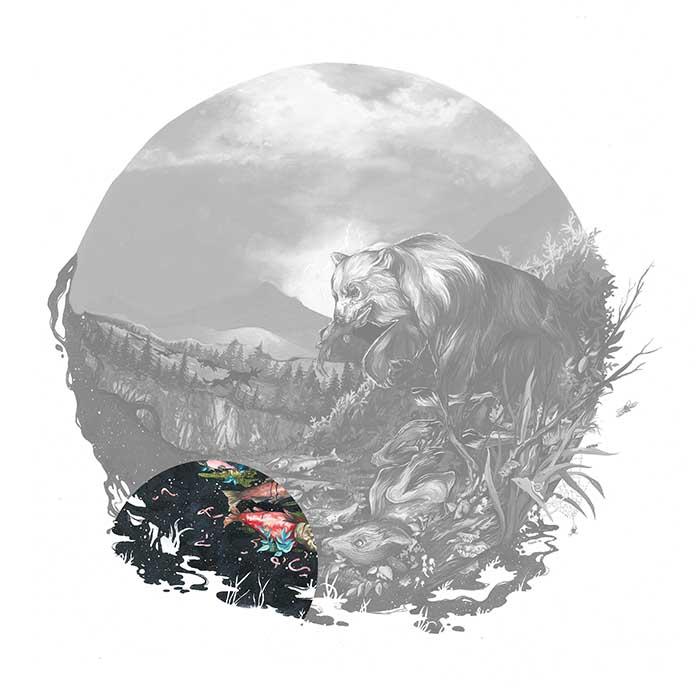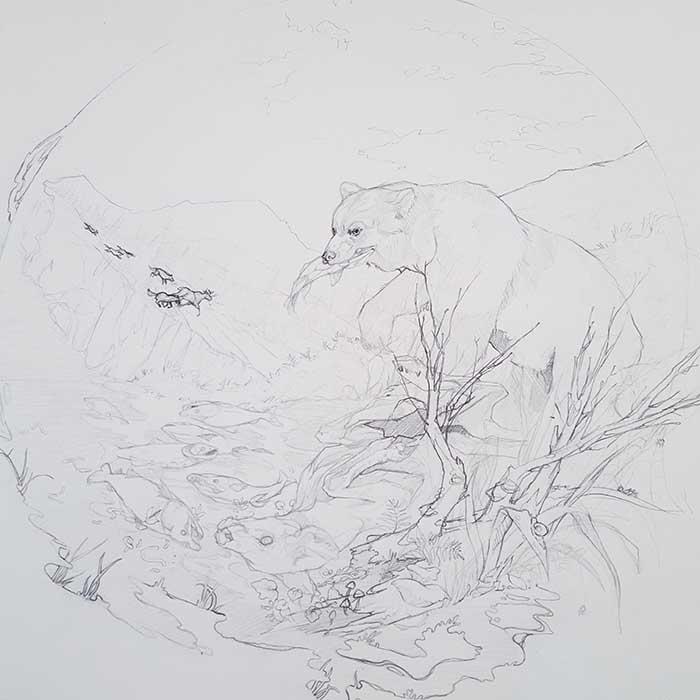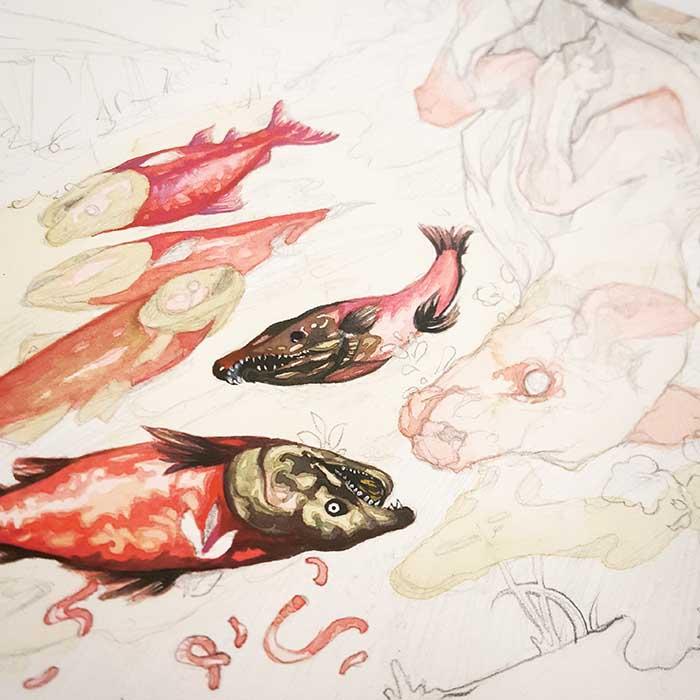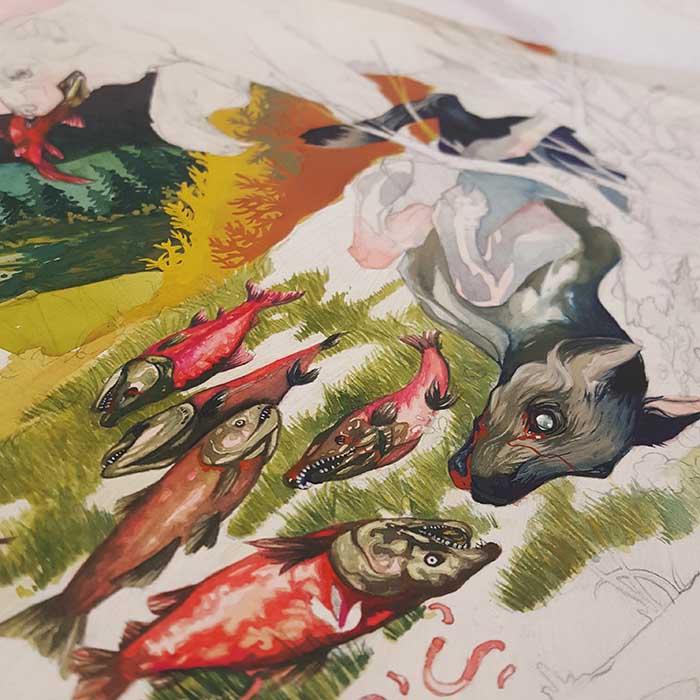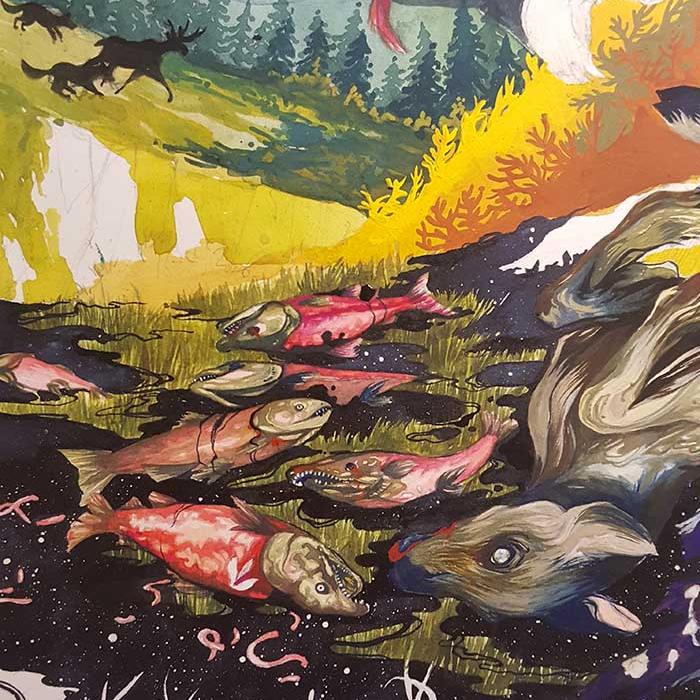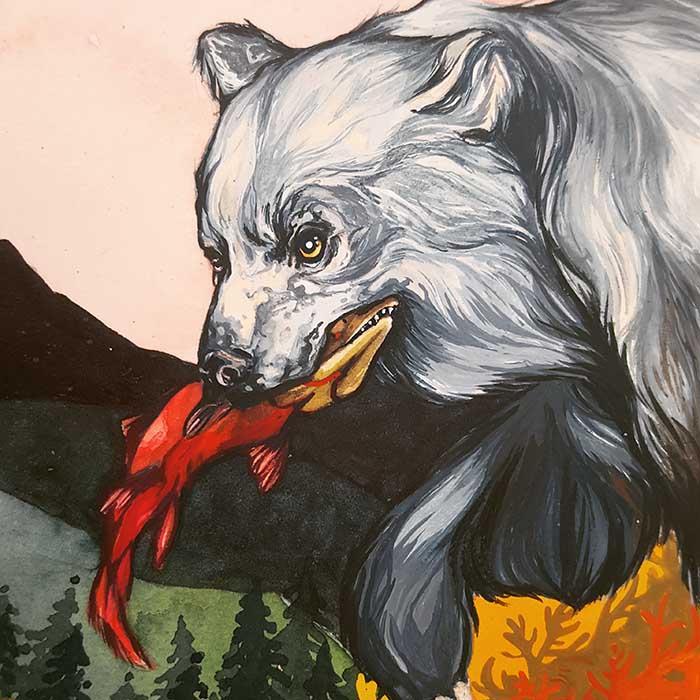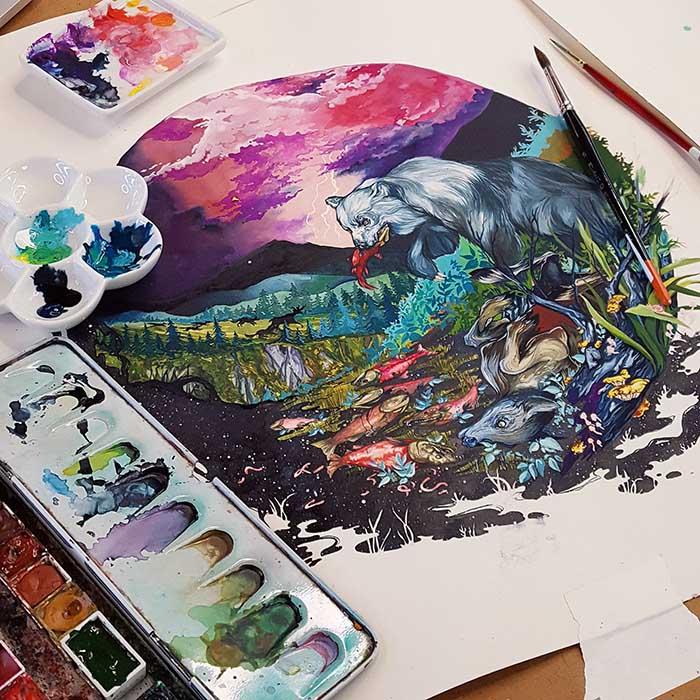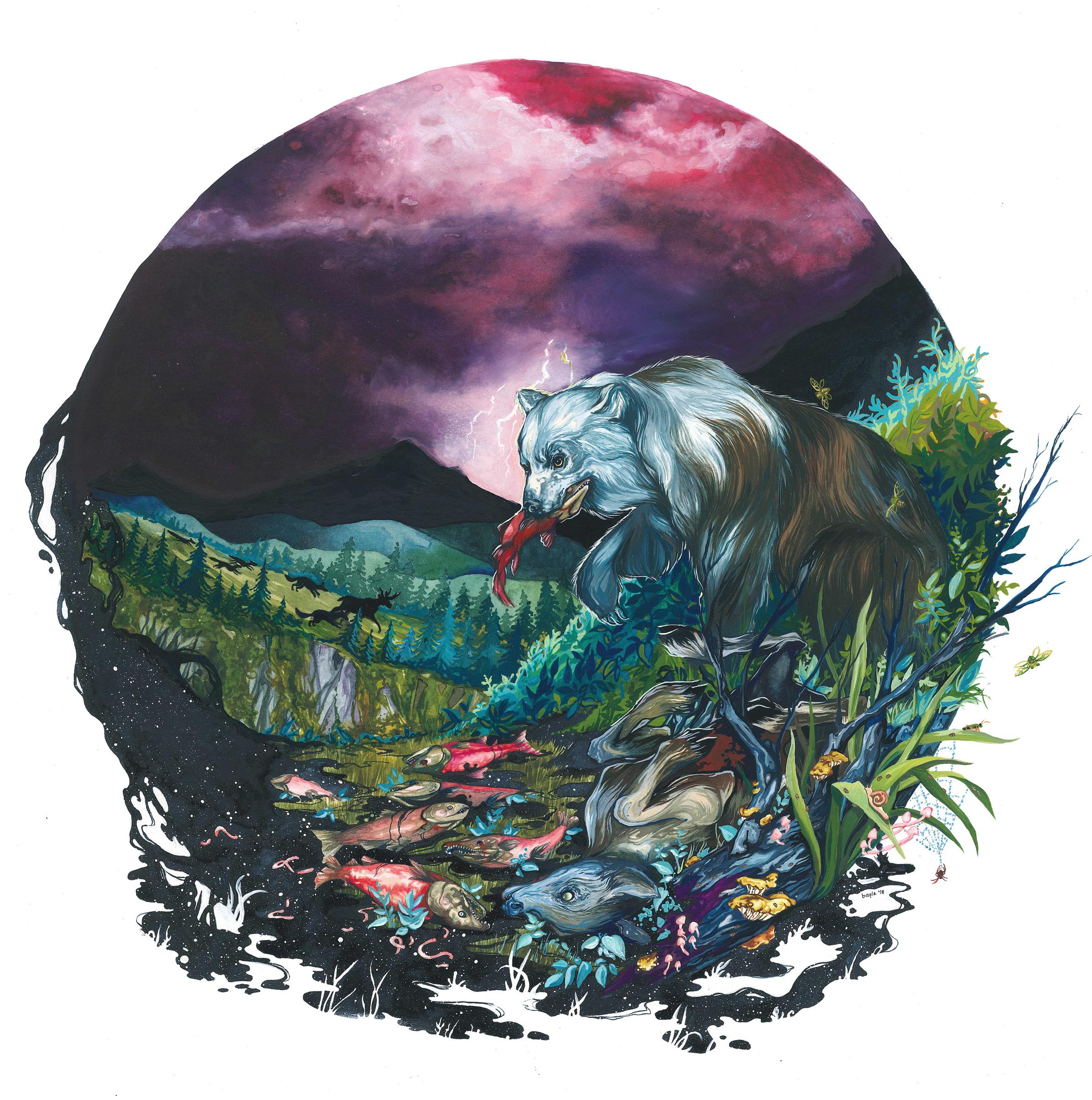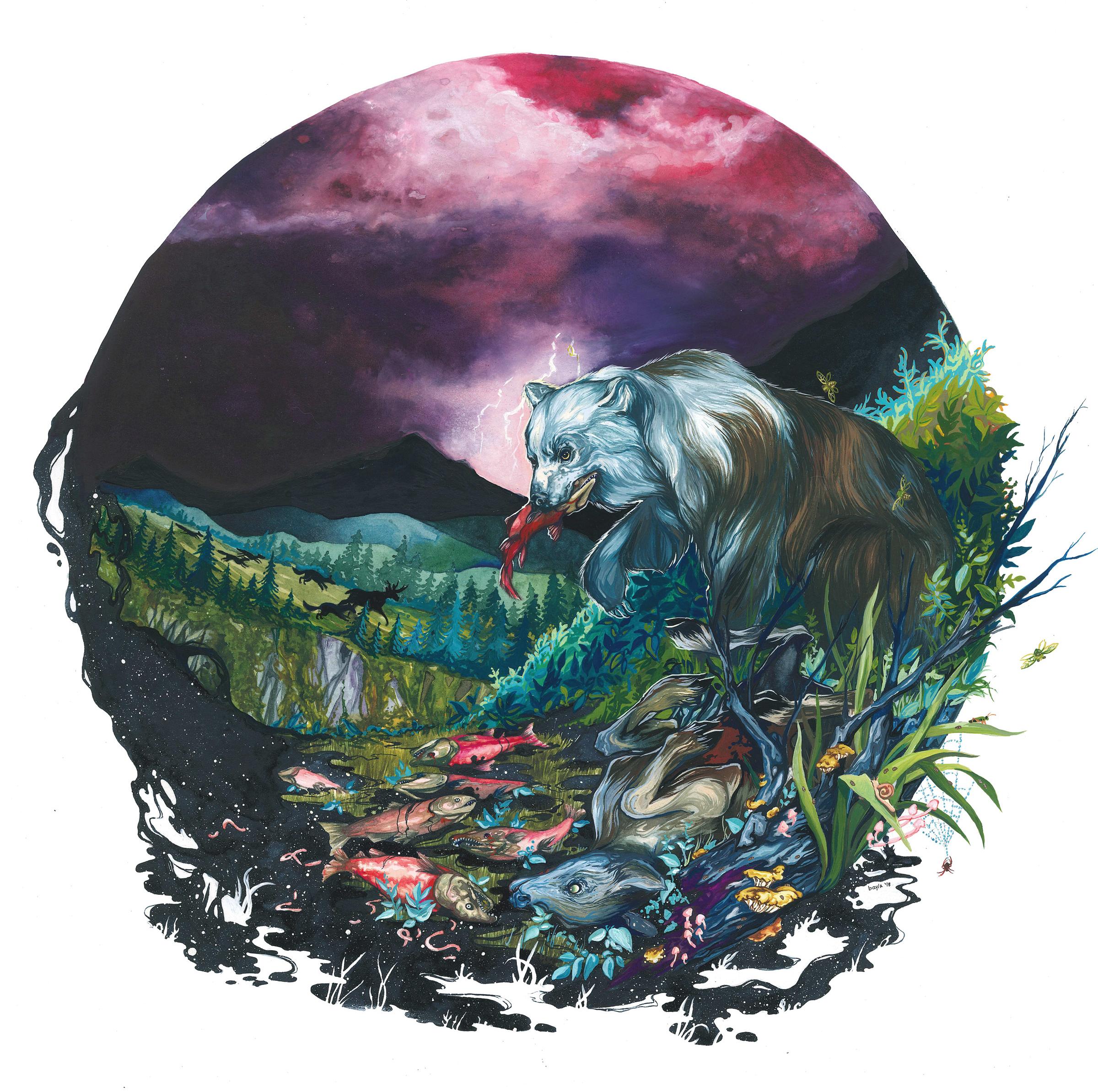
Nitrogen cycles are happening all around us in various forms. Nitrogen, a component of proteins and nucleic acids, is essential to life on Earth. Although 78% by volume of the atmosphere is nitrogen gas, this abundant reservoir exists in a form unusable by most organisms. Through a series of microbial transformations, however, nitrogen is made available to plants, which in turn ultimately sustains all animal life.
In planning this painting, I reached out to two Yale-affiliated experts, Julia Monk and Dr. Robert Buchkowski. Julia is a community and ecosystem ecologist, and a PhD candidate in the Schmitz Lab at Yale’s School of the Environment. Her work investigates how mammal predators and herbivores influence nutrient cycling and spatial patterning, especially in mountain and desert landscapes. Robert, who received his PhD from what was then the Yale School of Forestry & Environmental Studies, focuses on the role animals, plants, and microorganisms play in the movement of elements through ecosystems. Robert works to add new ecological dynamics into nutrient cycling models using a combination of mathematical theory and experiments.
Both Julia and Robert were happy and excited to answer my questions about classic examples of nitrogen cycle relationships. From these conversations and their suggestions, I created a painting that illustrates the following nitrogen cycles:
1. Nitrogen-fixing microbes like bacteria and blue-green algae convert nitrogen into inorganic nitrogen compounds. This is called nitrogen fixation. Nitrates and ammonia resulting from nitrogen fixation nourish algae and plants that animals then ingest and incorporate into their own body compounds. When living things excrete waste or die, their nitrogen is converted by microbes, a process called ammonification.
3. According to one study, there is a nitrogen relationship between salmon and bears. Spawning salmon transport nitrogen between marine and boreal forest systems. Salmon travel from the ocean up rivers and streams into boreal forests, where they are eaten by bears, eagles, and other animals that hunt them and scatter their remains throughout the forest. The nitrogen in decomposing salmon fertilizes the trees.
I created this illustration in 2014 for the State of Alaska’s Fish to Schools curriculum. It shows the life cycle of a salmon, but also hints at something more. The miniature forest emphasizes the important role salmon play after death, fertilizing the trees and spreading nutrients throughout the forest.
4. Studies show that moose and elk also play important roles in the nitrogen cycle. Moose slow down nitrogen cycling in the boreal forests of North America by eating nitrogen-rich plants and hardwoods. As a result, moose-filled forests are dominated by hardy spruce, which are less rich in nitrogen and are evergreen, so they don't generate as much litter. The leaf litter they do generate (tough needles) takes much longer to break down. The replenishment of nitrogen in the soil of these forests is therefore much slower. However, the carcasses of moose and elk killed by wolves create nitrogen hotspots in these forests.
5. In the same ways that moose and wolves drive the nitrogen cycle, another study shows that this is also seen on a smaller scale. The interaction of grasshoppers and spiders is a well-known example of how predators and prey affect the nitrogen cycle. When spiders are common in a field, grasshoppers will change their foraging preferences to goldenrod to avoid predation. When grasshoppers eat a lot of goldenrod, less nitrogen builds up in the plants and more is left in the soil to promote microbial growth and nitrogen decomposition.
Woodlouse (rolly-pollies) also play an important role and contribute to the nitrogen cycle, because they breathe out nitrogen as ammonia instead of urinating.
6. Other insects are important as well. The carcasses of cicadas that emerge in swarms produce huge nitrogen pulses.
7. Earthworms are another great example of organisms that increase soil nitrogen cycling! A paper published in 1948 focuses entirely on two pots of grass that grow differently because earthworms are present in one and not the other.
All animals release nitrogen when they poop, pee, and when they die, but there are several classic systems we know to be important drivers of nitrogen transport and cycling in their environments. Scientists that study these cycles can spend an entire career researching a single nitrogen cycle relationship.
To follow along with Julia’s work, check out her website julia-monk.com and her twitter @hooliamonk
To follow along with Robert’s work, check out his website https://robertwbuchkowski.github.io/
To see more of Bayla's illustration work, please visit www.BaylaArt.com Instagram: @BaylaArt Twitter: @BaylaArt
